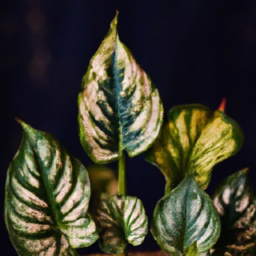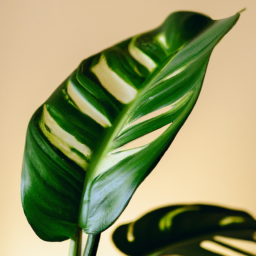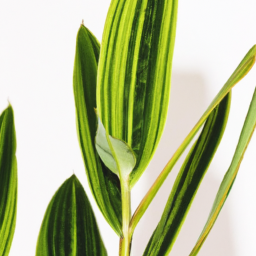
Are you looking to brighten up your home with some greenery but don’t have a lot of natural light? Don’t worry, there are plenty of house plants that don’t need sunlight to thrive. Whether you have a dark corner that needs some life or just want to add some green to a room with minimal light, there are options out there for you. In this blog post, we’ll explore some of the best house plants that don’t need sunlight, so you can bring some nature indoors without worrying about finding the perfect sunny spot.
House Plants that Don’t Need Sunlight
Benefits of Low-Light House Plants
When it comes to indoor plants, not all of them require direct sunlight to thrive. In fact, there are many house plants that can thrive in low-light conditions, making them perfect for rooms with minimal natural light. These plants not only add a touch of green to your living space but also come with a range of benefits. Let’s explore some of the advantages of having low-light house plants.
Improved Air Quality
One of the key benefits of having low-light house plants is their ability to improve indoor air quality. Plants are natural air purifiers, absorbing carbon dioxide and releasing oxygen through the process of photosynthesis. In addition to producing oxygen, certain house plants can also remove toxins and pollutants from the air, such as formaldehyde and benzene. This can help create a healthier and more pleasant living environment for you and your family.
Some of the best low-light house plants for improving air quality include snake plants, peace lilies, and spider plants. These plants are known for their air-purifying properties and can thrive in low-light conditions, making them perfect for bedrooms, bathrooms, and other spaces with limited sunlight.
In addition to purifying the air, low-light house plants can also help regulate humidity levels in your home. Plants release water vapor through a process called transpiration, which can increase humidity in the air. This is especially beneficial during the dry winter months when indoor air tends to be drier. By adding a few low-light house plants to your space, you can create a more comfortable and healthy indoor environment.
Stress Reduction
Another benefit of having low-light house plants is their ability to reduce stress and improve mental well-being. Studies have shown that being around plants can have a calming effect on the mind and body, helping to reduce feelings of anxiety and stress. The presence of greenery indoors can create a sense of tranquility and connection to nature, which can be especially beneficial in urban environments or during times of high stress.
Plants have been shown to have a positive impact on mood and productivity, making them a great addition to home offices or study spaces. Low-light house plants like pothos, philodendrons, and ZZ plants are easy to care for and can thrive in low-light conditions, making them ideal for creating a calming and stress-free environment in your home.
In addition to their stress-reducing properties, low-light house plants can also help improve focus and concentration. Studies have shown that being around plants can enhance cognitive function and productivity, making them a valuable addition to workspaces and study areas. By incorporating low-light house plants into your living space, you can create a more peaceful and productive environment for yourself and your family.
Decorative Element
Aside from their health benefits, low-light house plants can also serve as a decorative element in your home. Plants add a touch of nature and color to indoor spaces, helping to create a more inviting and aesthetically pleasing environment. Whether you prefer lush foliage or delicate blooms, there are plenty of low-light house plants to choose from that can complement your home decor style.
Low-light house plants come in a variety of shapes, sizes, and textures, making it easy to find the perfect plant for any room in your home. From trailing vines to compact succulents, there is a low-light plant for every space, whether you have a sunny windowsill or a dark corner that needs brightening up. By incorporating plants into your interior design, you can add a touch of greenery and life to your living space, creating a more welcoming and vibrant atmosphere.
In conclusion, low-light house plants offer a range of benefits, from improving air quality and reducing stress to adding a decorative touch to your home. With the right care and attention, these plants can thrive in low-light conditions, making them a versatile and valuable addition to any indoor space. Consider adding a few low-light house plants to your home to enjoy their many benefits and enhance your living environment.

Top 10 House Plants That Thrive in Low-Light Conditions
Introduction
When it comes to indoor gardening, finding the right house plants that don’t need sunlight can be a challenge. Luckily, there are plenty of options available for those who have limited natural light in their homes. In this guide, we will explore the top 10 house plants that thrive in low-light conditions, making them perfect for any room in your home.
Snake Plant
The snake plant, also known as mother-in-law’s tongue, is a popular choice for low-light environments. This hardy plant is able to thrive in a variety of conditions, making it perfect for beginners or those with less-than-ideal lighting situations. The snake plant has long, upright leaves that come in a variety of shades, from dark green to variegated patterns. This plant is also known for its air-purifying qualities, making it a great addition to any room in your home.
One important thing to note about snake plants is that they do not require frequent watering. In fact, it is best to let the soil dry out completely between waterings to prevent root rot. Snake plants are also tolerant of neglect, so if you forget to water them for a week or two, they will likely be just fine.
If you are looking for a low-maintenance plant that can thrive in low-light conditions, the snake plant is an excellent choice.
ZZ Plant
The ZZ plant is another great option for those looking for house plants that don’t need sunlight. This plant is known for its waxy, dark green leaves that add a touch of elegance to any room. The ZZ plant is incredibly low-maintenance, making it perfect for busy individuals or those with a black thumb.
One of the key benefits of the ZZ plant is its ability to thrive in low-light conditions. This plant can survive in areas with minimal natural light, making it a great choice for rooms that don’t get much sun exposure. The ZZ plant also has a unique growth habit, with stems that grow in a zig-zag pattern, giving it a visually interesting appearance.
When it comes to caring for a ZZ plant, it is important to avoid overwatering. This plant prefers to dry out between waterings, so be sure to let the soil dry completely before watering again. With proper care, the ZZ plant can thrive in low-light environments for years to come.
Pothos
Pothos, also known as devil’s ivy, is a versatile house plant that is well-suited for low-light conditions. This plant has heart-shaped leaves that come in a variety of shades, from dark green to variegated patterns. Pothos is known for its trailing growth habit, making it perfect for hanging baskets or shelves.
One of the key benefits of pothos is its ability to thrive in low-light environments. This plant can survive in areas with minimal natural light, making it a great choice for rooms that don’t get much sun exposure. Pothos is also incredibly easy to care for, making it perfect for beginners or those with a busy schedule.
When it comes to caring for pothos, it is important to water the plant when the top inch of soil feels dry to the touch. Pothos prefers to dry out between waterings, so be sure not to overwater. With proper care, pothos can thrive in low-light conditions and add a touch of greenery to any room in your home.
In conclusion, there are plenty of house plants that don’t need sunlight and can thrive in low-light conditions. From snake plants to ZZ plants to pothos, there are options available for every preference and skill level. By choosing the right plants and providing them with proper care, you can enjoy the beauty of indoor gardening without the need for natural light.

Tips for Caring for Indoor Plants That Don’t Require Sunlight
Understanding the Needs of Low-Light Plants
When it comes to caring for indoor plants that don’t require sunlight, it’s important to understand the specific needs of these types of plants. Low-light plants are typically those that are native to forest floors or shady areas, where they have adapted to thrive in low-light conditions. These plants have evolved to be able to photosynthesize and grow with minimal sunlight, making them perfect for indoor spaces with limited natural light.
One key aspect of caring for low-light plants is to provide them with the right amount of water. While it’s true that these plants don’t require as much sunlight as other plants, they still need to be watered regularly to thrive. It’s important to check the soil moisture levels regularly and water the plants when the top inch of soil feels dry to the touch. Overwatering can be just as harmful as underwatering, so it’s important to strike the right balance.
In addition to proper watering, low-light plants also benefit from occasional fertilization. Since these plants are growing in less than ideal conditions, they may need a little extra boost to stay healthy and vibrant. Choose a balanced, water-soluble fertilizer and apply it according to the manufacturer’s instructions. Be careful not to over-fertilize, as this can lead to nutrient build-up in the soil and harm the plant.
Another important aspect of caring for indoor plants that don’t require sunlight is to provide them with the right environment. These plants thrive in consistent temperatures and humidity levels, so it’s important to keep them away from drafts, heaters, and air conditioners. You can also increase humidity levels by placing a humidifier near the plants or by misting them regularly with a spray bottle. Creating a stable environment will help your low-light plants thrive and grow.
Choosing the Right Plants for Low-Light Conditions
When selecting indoor plants that don’t require sunlight, it’s important to choose varieties that are well-suited to low-light conditions. Some popular options include the snake plant, pothos, peace lily, and spider plant. These plants are known for their ability to thrive in low-light environments and are relatively easy to care for, making them perfect for beginners or busy plant owners.
The snake plant, also known as mother-in-law’s tongue, is a popular choice for low-light spaces due to its hardy nature and air-purifying qualities. This plant can tolerate a wide range of light conditions and is known for its striking upright leaves. The snake plant is also relatively low-maintenance, making it a great option for those new to indoor gardening.
Pothos is another great choice for low-light environments, as it can thrive in a variety of light conditions and is known for its trailing vines and heart-shaped leaves. This plant is easy to care for and can tolerate occasional neglect, making it a popular choice for busy plant owners. Pothos is also a great air-purifying plant, making it a welcome addition to any indoor space.
Peace lilies are another popular choice for low-light conditions, as they can thrive in shady areas and are known for their elegant white flowers. These plants require regular watering and prefer higher humidity levels, making them a great option for bathrooms or kitchens. Peace lilies are also effective at removing toxins from the air, making them a healthy choice for indoor spaces.
Spider plants are known for their long, arching leaves and spider-like plantlets that dangle from the mother plant. These plants are easy to care for and can thrive in low-light conditions, making them a great choice for beginners. Spider plants prefer well-draining soil and regular watering, making them a low-maintenance option for indoor spaces.
Troubleshooting Common Issues with Low-Light Plants
While caring for indoor plants that don’t require sunlight can be relatively easy, there are some common issues that may arise. One common problem is yellowing leaves, which can be caused by overwatering, underwatering, or nutrient deficiencies. If you notice yellowing leaves on your low-light plants, try adjusting your watering schedule and fertilizing the plants to see if it helps.
Another common issue with low-light plants is pest infestations, such as spider mites or mealybugs. These pests can damage the plant and affect its overall health, so it’s important to address the issue promptly. You can try using natural remedies like neem oil or insecticidal soap to control the pests, or you may need to resort to chemical treatments for severe infestations.
Wilting or drooping leaves can also be a sign of stress in low-light plants, which can be caused by underwatering, overwatering, or environmental factors. If you notice wilting leaves on your plants, check the soil moisture levels and adjust your watering schedule accordingly. You can also try moving the plants to a more suitable location with better light and humidity levels to help them recover.
In conclusion, caring for indoor plants that don’t require sunlight can be a rewarding experience, as these plants can thrive in a variety of indoor environments. By understanding the specific needs of low-light plants, choosing the right varieties, and troubleshooting common issues, you can create a healthy and vibrant indoor garden that will brighten up your space. Remember to provide your plants with the right amount of water, fertilize them occasionally, and create a stable environment for them to thrive. With a little care and attention, your low-light plants will flourish and bring beauty to your home.
In Summary
If you’re a plant lover but don’t have a lot of natural light in your home, fear not! There are plenty of house plants that thrive in low-light conditions. Some popular options include the snake plant, peace lily, and ZZ plant. These plants are not only beautiful additions to your indoor space, but they also require minimal maintenance, making them perfect for busy individuals or those with a black thumb.
Snake plants, also known as mother-in-law’s tongue, are known for their ability to thrive in low light and are even said to purify the air in your home. Peace lilies are another great option that can bloom in low-light settings and are known for their elegant white flowers. Lastly, the ZZ plant is a hardy plant that can survive in almost any condition, making it a great choice for beginners or those with little time to devote to plant care. So don’t let a lack of sunlight hold you back from enjoying the benefits of indoor greenery – these plants are sure to brighten up your space!
Common Questions and Answers:
Q1: What are some house plants that don’t need sunlight?
A1: Some house plants that thrive in low light conditions include snake plants, pothos, peace lilies, and ZZ plants. These plants can survive and even thrive with minimal sunlight.
Q2: How often should I water house plants that don’t need sunlight?
A2: Even though these plants don’t need as much sunlight, they still require regular watering. It’s important to check the soil moisture regularly and water when the top inch of soil is dry.
Q3: Can I keep house plants that don’t need sunlight in a windowless room?
A3: While these plants can survive in low light conditions, it’s best to place them near a window or a source of indirect light. If you have a windowless room, consider using artificial grow lights to provide the necessary light for the plants.
Q4: Do house plants that don’t need sunlight still need fertilizer?
A4: Yes, even plants that don’t require sunlight still benefit from occasional fertilization. Use a balanced houseplant fertilizer and follow the instructions on the package for best results.
Q5: Are there any specific care tips for house plants that don’t need sunlight?
A5: In addition to regular watering and occasional fertilizing, it’s important to keep an eye on the humidity levels around these plants. Misting the leaves or placing a humidifier nearby can help create a more favorable environment for these low-light plants.

James Wong is a renowned ethnobotanist, plant scientist, and local television presenter. With a passion for demystifying plant science, he is known for translating complex botanical concepts into practical advice for everyday plant enthusiasts. James’s expertise spans from traditional gardening to cutting-edge plant technologies, making his insights accessible and informative.


